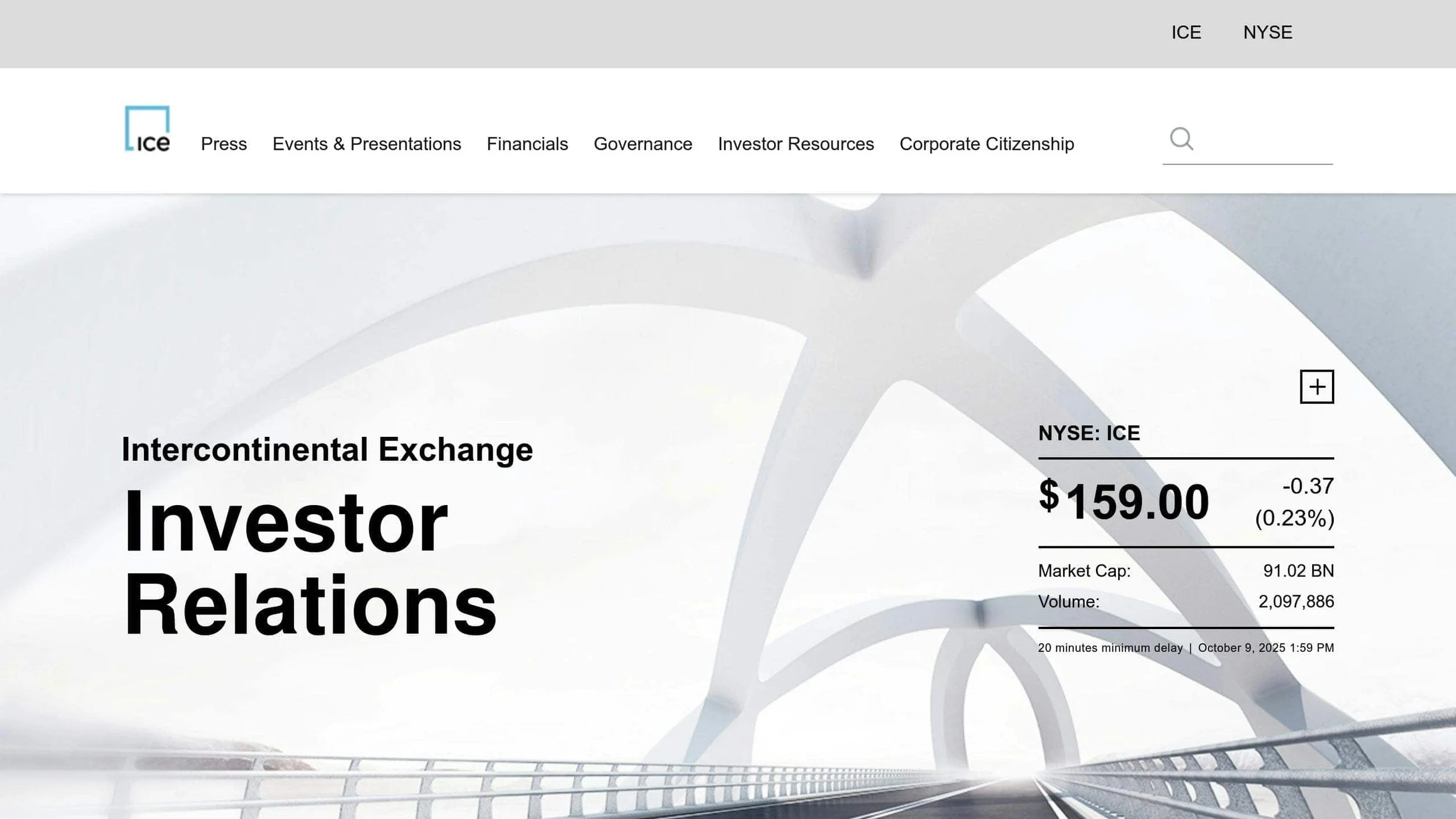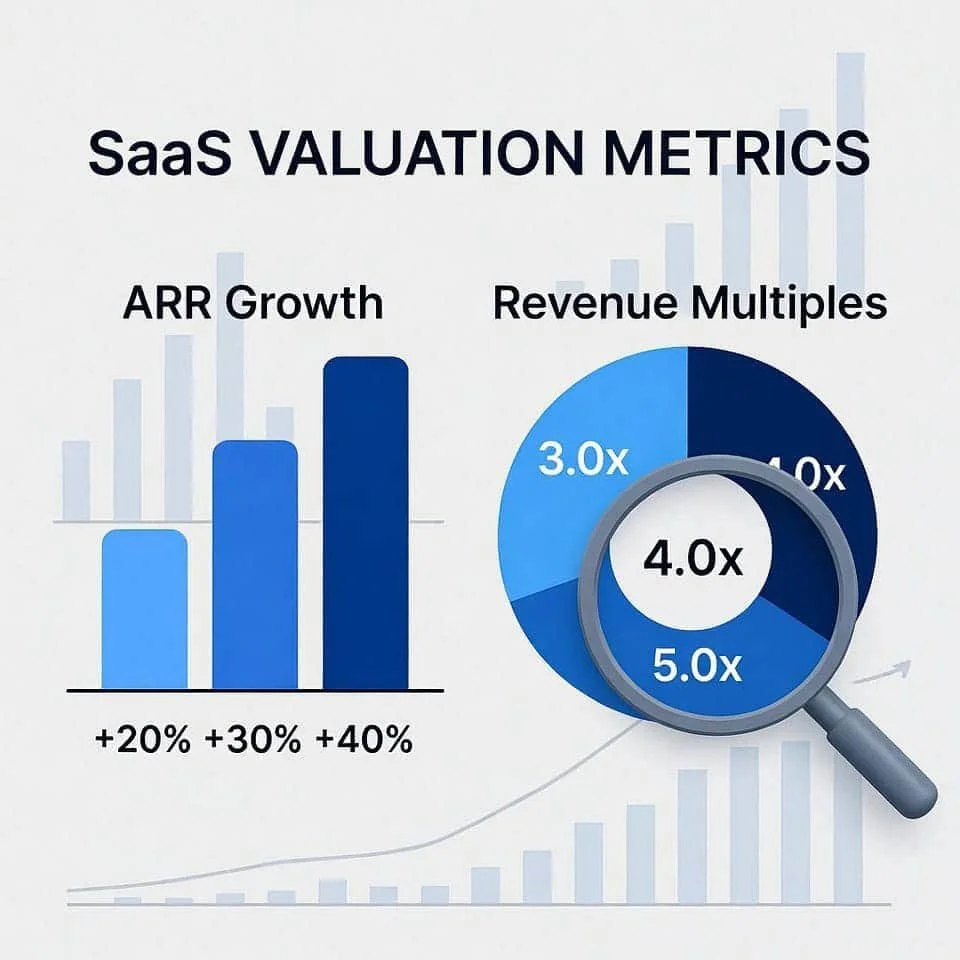From Startup to $8B Valuation: A Polymarket Case Study on the Lifecycle of Prediction Markets and Timeless Lessons for Founders and Investors
Polymarket’s rise to an $8 billion valuation offers a roadmap for navigating fintech challenges. Launched in 2020, the platform overcame regulatory penalties, exited the U.S., and expanded globally. By leveraging blockchain technology, simplifying user onboarding, and capitalizing on high-profile events like the 2024 U.S. elections, it surged in popularity. On October 8, 2025, a $2 billion investment from Intercontinental Exchange marked its official return to the U.S. market.
Key takeaways for founders and investors:
Regulatory compliance is non-negotiable: Addressing legal challenges early builds trust and attracts institutional funding.
Timing matters: Align product launches with major events or favorable market conditions.
Scalability is critical: Prepare for spikes in user activity during viral moments.
Polymarket’s journey highlights how fintech companies can turn obstacles into growth opportunities. In the following case study, we break down how Polymarket went from startup to an $8 billion valuation in just five years.
Largest Crypto Investment EVER Made - Inside NYSE’s BILLION DOLLAR Polymarket Gamble
Founding and Early Growth of Polymarket
Polymarket's journey began with an ambitious idea that quickly propelled its development.
The Vision Behind Polymarket
In June 2020, Shayne Coplan introduced Polymarket after dedicating a year to exploring the potential of prediction markets in improving decision-making. His inspiration stemmed from the work of economist Robin Hanson, whose research highlighted the power of prediction markets. This foundational vision not only set the stage for Polymarket's growth but also guided its approach to navigating regulatory challenges.
Handling Regulatory Challenges
As Polymarket grew, it encountered significant regulatory challenges that often arise when innovation intersects with established legal systems. These obstacles, combined with earlier regulatory penalties, highlighted the critical importance of having a solid legal strategy in the fintech space. For founders, Polymarket’s journey serves as a powerful reminder of the complexities involved in navigating ever-changing legal landscapes.
Regulatory Action and Its Impact
In January 2022, the U.S. Commodity Futures Trading Commission (CFTC) fined Polymarket $1.4 million and issued a cease-and-desist order for operating an unregistered derivatives platform, leading to a shutdown of its U.S. business and forcing operations offshore. Internationally, regulators such as France’s ANJ have threatened bans due to licensing issues, while countries including Singapore and Thailand have blocked the platform over concerns about unregulated gambling and its use of cryptocurrency.
For fintech entrepreneurs, this case underscores the importance of engaging with regulatory experts early in the process and embedding compliance into the foundation of their business models.
Building a Compliance Framework
To tackle these challenges, Polymarket responded by acquiring QCEX, a CFTC-licensed exchange, in 2024, which allowed it to legally re-enter the U.S. market after obtaining a CFTC no-action letter in September 2024.
The company worked closely with legal professionals to restructure its operations, ensuring they aligned more effectively with regulatory expectations. Key improvements included bolstering customer verification processes and implementing geographic restrictions to meet the standards of different jurisdictions.
These efforts not only addressed immediate regulatory concerns but also set the stage for sustainable growth. By prioritizing strong compliance practices and maintaining an open dialogue with regulators, Polymarket positioned itself to navigate the complexities of legal requirements while continuing to innovate in the prediction market industry.
As a result, this strategic pivot to compliance attracted a $2 billion investment from Intercontinental Exchange (ICE)—the parent company of the New York Stock Exchange—and brought Polymarket’s valuation to $8 billion as of October 2025.
The platform’s story demonstrates the importance for founders to have robust legal strategies from the outset, as regulatory actions can rapidly shift from existential threats to catalysts for strategic growth and institutional acceptance.
Growth Events and Business Changes
Polymarket experienced remarkable growth by capitalizing on viral moments while maintaining a strong compliance foundation. These unexpected events proved the demand for scalable platforms in real-time prediction markets. By aligning these viral milestones with earlier strategic decisions and funding achievements, Polymarket positioned itself for sustained success.
2023 Titan Submersible Event and User Growth
The 2023 Titan submersible incident became a pivotal moment for Polymarket, as user activity surged with audiences speculating on unfolding events. This spike demonstrated the platform's ability to thrive during breaking news moments.
Polymarket’s technical setup played a key role in handling the influx of users. A quick, 60-second wallet-less signup process removed onboarding hurdles, allowing users to join effortlessly [3]. Additionally, integrations with MoonPay and Stripe simplified fiat-to-crypto conversions, making account funding almost seamless [3].
Twitter-native link previews, which displayed live market prices, turned shared predictions into organic advertisements, fueling even more user growth [3]. By simplifying blockchain complexities, Polymarket ensured users faced only a single network fee during trades. Meanwhile, the platform absorbed gas costs through meta-transactions, ensuring a smooth experience even as thousands joined simultaneously [3].
2024 U.S. Elections and Market Activity
The 2024 U.S. elections marked another defining period for Polymarket, driving a staggering 48x surge in trading volume. Lower Layer 2 gas fees and an expanded USDC supply encouraged smaller bets, attracting a mix of retail participants and institutional investors. Election-related markets quickly became a standout feature, drawing interest from those looking for real-time sentiment data.
Polymarket’s capital-efficient model charged a 2% fee on net winnings, while users incurred no fees on losses or mid-market trades [3]. A partnership with UMA ensured decentralized resolution, safeguarding user funds during settlement [3][4].
Major Funding and U.S. Market Return
Polymarket's journey to an $8 billion valuation was propelled by strategic funding and a well-timed re-entry into the U.S. market.
These pivotal moments laid the groundwork for Polymarket's ambitious plans in the United States.
$2 Billion Investment from Intercontinental Exchange
On October 8, 2025, Polymarket secured a massive $2 billion investment from Intercontinental Exchange, the parent company of the New York Stock Exchange. This move not only underscored the potential of prediction markets but also provided the resources needed for significant expansion.
2025 U.S. Relaunch and Expansion Plans
In 2025, Polymarket marked its official return to the U.S. market by acquiring QCEX, a CFTC-licensed derivatives exchange and clearinghouse, for $112 million. This acquisition paves the way for regulatory compliance and operational legitimacy after being barred since 2022.
This relaunch was further bolstered by a substantial $2 billion investment from Intercontinental Exchange (ICE), the parent company of the New York Stock Exchange. This investment brought Polymarket’s valuation to over $8 billion and positioned ICE as a global distributor of Polymarket’s data and analytics.
The relaunch and strategic partnership signaled aggressive expansion plans, including integration with institutional clients and the exploration of tokenization initiatives—potentially transforming how financial markets assess and price future events.
Despite initial regulatory delays due to a U.S. government shutdown and ongoing CFTC review, Polymarket has already self-certified several sports event markets and aims to go live with regulated real-money trading before the end of 2025.
This combination of regulatory approval, institutional backing, and new product offerings demonstrates a robust growth trajectory for Polymarket in the U.S. market.
Key Lessons for Founders and Investors
Polymarket's impressive trajectory, growing from a startup to an $8 billion valuation in five years, offers valuable insights for fintech leaders. Its journey highlights the importance of navigating regulation, leveraging technology, and seizing market opportunities. These key lessons showcase how thoughtful strategies in these areas can turn potential obstacles into competitive strengths.
Handling Regulatory Issues
Turn regulatory hurdles into opportunities for growth. When Polymarket faced a fine from the CFTC in 2022, founder Shayne Coplan saw it as a chance to strengthen their compliance systems rather than a setback. This proactive stance helped establish a solid foundation that later attracted institutional investors like Intercontinental Exchange.
Engaging with regulators early and transparently is key. Instead of operating in ambiguous legal areas, Polymarket prioritized building relationships with compliance experts and legal teams from the start. While this approach may require higher upfront costs, it prevents expensive course corrections later and builds trust with investors who value regulatory clarity.
Keep detailed records and maintain open communication. Polymarket's ability to navigate scrutiny hinged on their meticulous record-keeping and ongoing dialogue with regulators. This transparency was instrumental in securing approvals for their 2025 re-entry into the U.S. market. Their rigorous approach to compliance not only addressed legal challenges but also set the stage for leveraging blockchain technology to scale effectively.
Using Decentralized Technology for Growth
With a strong regulatory framework in place, Polymarket turned to technology as a key driver of growth. By leveraging blockchain, the company scaled seamlessly during high-traffic events, ensuring global accessibility and robust disaster recovery. For example, during the 2023 Titan submersible incident, Polymarket's decentralized infrastructure allowed it to handle a surge in users without traditional bottlenecks.
Decentralized systems offer several advantages. Unlike traditional financial platforms that face geographic limitations and single points of failure, Polymarket's approach enabled users worldwide to participate in prediction markets effortlessly. This scalability is essential for managing sudden spikes in user activity during viral moments.
For founders, the lesson here is that adopting decentralized technology isn't just about following trends - it’s about creating systems that can support rapid growth without adding unnecessary operational complexity. This approach ensures readiness for moments of explosive user interest.
Finding Growth Opportunities in New Markets
Capitalize on cultural moments and current events. Polymarket's rapid growth during events like the 2023 Titan submersible incident and the 2024 U.S. elections wasn't coincidental. The company positioned itself to tap into public curiosity during times of uncertainty, driving organic user acquisition.
That said, the company didn’t solely rely on viral moments. Polymarket maintained steady operations during quieter periods, ensuring it could handle traffic surges when they happened. This balance between stability and responsiveness was crucial.
Time market re-entry strategically. Polymarket's 2025 U.S. relaunch was carefully aligned with favorable regulatory developments and increased institutional interest in prediction markets. This timing amplified the impact of their $2 billion funding round from Intercontinental Exchange, driving further growth.
The takeaway for investors is clear: prioritize teams that can adapt to regulatory shifts while staying innovative. Companies that thrive in fintech are those that balance compliance with aggressive growth strategies, using challenges as opportunities to build stronger competitive advantages. Polymarket’s journey underscores the value of this approach, making it a compelling case study for founders and investors alike.
Conclusion: Key Takeaways from Polymarket's Growth
Polymarket's rise from a 2020 startup to achieving an $8 billion valuation showcases how fintech companies can turn regulatory hurdles into strategic advantages. Shayne Coplan's vision of creating a platform for real-time sentiment tracking came to life through smart pivots, a strong focus on compliance, and seizing timely opportunities in the market.
Even setbacks, like the $1.4 million settlement with the CFTC in 2022, became stepping stones. These challenges pushed Polymarket to build a solid compliance foundation early on - a decision that proved invaluable as the company scaled.
Timing also played a major role in its growth. The 2024 U.S. Presidential Election was a key driver of user engagement, demonstrating how aligning with high-stakes events can fuel rapid expansion.
Institutional confidence in the platform was cemented when Intercontinental Exchange, the owner of the New York Stock Exchange, invested $2 billion on October 8, 2025, valuing Polymarket at about $8 billion [6][7][8]. This endorsement not only highlighted the growing acceptance of prediction markets but also validated Polymarket’s ability to balance innovation with regulatory rigor.
For entrepreneurs, Polymarket’s journey underscores the importance of blending creativity with a strong compliance strategy to achieve sustainable growth. Its regulatory clearance for re-entering the U.S. market in September 2025 [5] further illustrates how investing in compliance can pave the way for long-term success. For investors, this story highlights how regulatory challenges, when approached strategically, can become powerful competitive advantages, especially when market conditions align.
FAQs
How did Polymarket overcome regulatory hurdles while expanding globally?
Polymarket navigated regulatory hurdles by acquiring QCEX, a CFTC-licensed entity, enabling its legal return to the U.S. market. This move set the stage for a significant $2 billion investment from Intercontinental Exchange, the parent company of the NYSE.
By aligning with shifting legal requirements, Polymarket collaborated with regulators, addressed previous investigations, and secured CFTC approval to relaunch in the U.S. in 2025. These actions underscored its dedication to compliance and strengthened its position for long-term expansion on a global scale.
How did Polymarket's technology and scalability enable it to handle spikes in user activity during major events?
Polymarket handles spikes in user activity effectively thanks to its reliance on decentralized technologies like Polygon and Chainlink. These tools enable low-cost transactions and provide real-time data updates, keeping the platform stable and efficient even during periods of heavy traffic.
An additional boost came from a $2 billion investment by Intercontinental Exchange (ICE). This funding enhanced Polymarket's infrastructure, allowing it to manage large trading volumes and peak user demand with ease. This solid technological backbone has been critical in ensuring reliability during major events, such as high-stakes elections and trending market surges.
What can founders and investors learn from Polymarket's growth to build successful fintech companies?
Polymarket's story offers valuable insights for fintech founders and investors aiming to achieve steady growth.
One major takeaway is the importance of addressing regulatory challenges head-on. Polymarket adjusted its operations to align with U.S. regulations, demonstrating how staying proactive and working closely with regulators can help ensure a business's longevity.
Another lesson lies in the value of establishing credibility through partnerships. For example, Polymarket's ability to secure a $2 billion investment from the NYSE owner and reach an $8 billion valuation highlights how institutional support can accelerate growth. Building strong relationships with influential players in the industry opens doors to significant opportunities.
Lastly, the company’s use of decentralized technology and its focus on emerging trends, such as prediction markets, underscore the importance of innovation. By blending cutting-edge technology with thoughtful strategy, fintech founders and investors can carve out a competitive edge in this rapidly evolving space.
Disclaimer: The information provided in this article is for general informational purposes only and does not constitute legal, financial, or investment advice. While every effort has been made to ensure the accuracy and reliability of the information contained herein, the author and Allied Venture Partners assume no responsibility for errors, omissions, or any actions taken based on this content. Readers are encouraged to consult with qualified legal or financial advisors regarding their individual circumstances before making any business, investment, or regulatory decisions. The regulatory environment described is subject to change and may not apply to all jurisdictions or situations. Use of this information is at your own risk.




